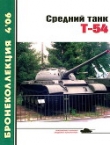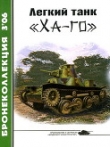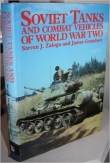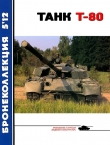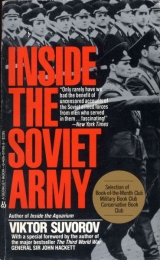
Текст книги "Inside The Soviet Army"
Автор книги: Viktor Suvorov
Жанр:
Публицистика
сообщить о нарушении
Текущая страница: 2 (всего у книги 26 страниц)
Why was the Warsaw Treaty Organisation set up later than NATO?
1
The countries of the West set up NATO in 1949 but the Warsaw Treaty Organisation was created only in 1955. For the Communists, comparison of these two dates makes excellent propaganda for consumption by hundreds of millions of gullible souls. Facts are facts-the West put together a military bloc while the Communists simply took counter-measures-and there was a long delay before they even did that. Not only that, but the Soviet Union and its allies have come forward repeatedly and persistently with proposals for breaking up military blocs both in Europe and throughout the world. The countries of the West have rejected these peace-loving proposals almost unanimously.
Let us take the sincerity of the Communists at face value. Let us assume that they do not want war. But, if that is so, the delay in establishing a military alliance of Communist states contradicts a fundamental tenet of Marxism: `Workers of the World Unite! is the chief rallying cry of Marxism. Why did the workers of the countries of Eastern Europe not hasten to unite in an alliance against the bourgeoisie? Whence such disrespect for Marx? How did it happen that the Warsaw Treaty Organisation was set up, not in accordance with the Communist Manifesto but solely as a reaction to steps taken by the bourgeois countries-and then so belatedly?
Strange though it may seem, there is no contradiction with pure Marxism in this case. But, in trying to understand the aims and structures of the Warsaw Treaty Organisation, the interrelationships within it and the delay in its establishment (which at first sight is inexplicable), we shall not immerse ourselves in theory nor attempt to follow the intricate workings of this unwieldy bureaucratic organisation. If we study the fate of Marshal K. K. Rokossovskiy we shall come to understand, if not everything, at least the essentials.

2
Konstantin Konstantinovich Rokossovskiy was born in 1896 in the old Russian town of Velikiye Luki. At eighteen he was called up by the Russian army. He spent the whole of the war at the front, first as a private, then as an NCO. In the very first days of the Revolution he went over to the Communists and joined the Red Army. He distinguished himself fighting against both the Russian and Polish armies. He moved rapidly upwards, ending the war in command of a regiment. After the war he commanded a brigade, then a division and then a corps.
At the time of the Great Purge the Communists tortured or shot those people who had miraculously survived until then despite past connections with the Russian government, army, police, diplomatic service, church or culture. Red Army Corps Commander Rokossovskiy found himself among the millions of victims because of his service with the Russian army.
During the investigations he underwent appalling tortures. Nine of his teeth were knocked out, three of his ribs were broken, his toes were hammered flat. He was sentenced to death and spent more than three months in the condemned cell. There is testimony, including his own, that, twice, at least, he was subjected to mock shootings, being led to the place of execution at night, and made to stand at the edge of a grave as generals on his right and left were shot, while he was `executed' with a blank cartridge fired at the nape of his neck.
On the eve of the war between Germany and the Soviet Union Rokossovskiy was let out of gaol and given the rank of Major-General of Tank Forces and command of a mechanised corps. However, the charge resulting from his service with the Russian army was not dropped and the death sentence was not annulled. `Take command of this mechanised corps, prisoner, and we'll see about your death sentence later….
On the second day of the war, Rokossovskiy's 9th Mechanised Corps struck an unexpected and powerful blow against German tanks, which were breaking through in the area of Rovno and Lutsk, at a moment when the rest of the Soviet forces were retreating in panic. In a situation of confusion and disorganisation, Rokossovskiy showed calmness and courage in his defence of the Soviet regime. He managed to maintain the fighting efficiency of his corps and to make several successful counter-attacks. On the twentieth day of the war he was promoted, becoming Commander of the 16th Army, which distinguished itself both in the battle of Smolensk and, especially, in the battle for Moscow, when, for the first time in the course of the war, the German army was heavily defeated. During the battle of Stalingrad Rokossovskiy commanded the Don front, which played a decisive role in the encirclement and complete destruction of the strongest German battle group, consisting of twenty-two divisions.
During the battle for Kursk, when weather conditions put the contestants on equal terms, Rokossovskiy commanded the Central Front, which played a major part in smashing Hitler's last attempt to achieve a decisive success. Thereafter Rokossovskiy successfully commanded forces in operations in Byelorussia, East Prussia, Eastern Pomerania and, finally, in Berlin.
Stars rained upon Rokossovskiy. They fell on to his shoulder boards, on to his chest and around his neck. In 1944 he was awarded the diamond Marshal's Star and a gold star to pin on his chest. In 1945 he was awarded both the Victory order, on which sparkle no less than one hundred diamonds, and a second gold star. Stalin conferred the highest honour on Rokossovskiy by giving him command of the Victory Parade on Red Square.
But what has all this to do with the Warsaw Treaty Organisation? The fact that, immediately after the war, Stalin sent his favourite, Rokossovskiy, to Warsaw and gave him the title of Marshal of Poland to add to his existing rank as Marshal of the Soviet Union. In Warsaw Rokossovskiy held the posts of Minister of Defence, Deputy President of the Council of Ministers and Member of the Politburo of the Polish Communist Party. Think for a moment about the full significance of this-a Marshal of the Soviet Union as deputy to the head of the Polish government!
In practice Rokossovskiy acted as military governor of Poland, senior watchdog over the Polish government and supervisor of the Polish Politburo. As all-powerful ruler of Poland, Rokossovskiy remained a favourite of Stalin's, but a favourite who was under sentence of death, a sentence which was lifted only after the death of Stalin in 1953. A favourite of this sort could have been shot at any moment. But, even if the death sentence had been lifted, would it have taken long to impose a new one?
Now let us see the situation from the point of view of the Generalissimo of the Soviet Union, J. V. Stalin. His subordinate in Warsaw is Marshal of the Soviet Union Rokossovskiy. This subordinate carries out all orders unquestioningly, accurately and speedily. Why should Stalin conclude a military alliance with him? Even to contemplate such a step would show a flagrant disregard for the principles of subordination and would be an offence in itself. A sergeant has no right to make an agreement of any kind with the soldiers under him or a general with his officers. In the same way, a Generalissimo is not entitled to conclude alliances with his own Marshal. It is the right and duty of a commander to give orders and a subordinate is bound to obey these orders. Any other kind of relationship between commanders and their subordinates is entirely forbidden. The relationship between Stalin and Rokossovskiy was based upon the fact that Stalin gave the orders and that Rokossovskiy carried them out without question.
3
The fact that he knew no Polish did not disturb Rokossovskiy in the slightest. In those glorious days not a single general in the Polish army spoke Polish, relying instead on interpreters who were constantly in attendance.
In Russia in 1917 a Polish nobleman, Felix Dzerzhinskiy, established a blood-stained organisation; this was the Cheka, the forerunner of the GPU, NKVD, MGB, and KGB. Between 1939 and 1940 this organisation destroyed the flower of the Polish officer corps. During the war a new Polish army was formed in the Soviet Union. The soldiers and junior officers of this army were Poles, the senior officers and generals were Soviets. When they were transferred to the Polish army the Soviets received joint Polish-Soviet nationality and Polish military ranks, while remaining on the strength of the Soviet military hierarchy. Here is one case history from many thousands:
Fyodor Petrovich Polynin was born in 1906 in the province of Saratov. He joined the Red Army in 1928 and became a pilot. In 1938–39 he fought in China with the forces of Chiang Kai-Shek. He used a Chinese name and was given Chinese nationality. Although thus a Chinese subject, he was nevertheless made a `Hero of the Soviet Union'. He returned to the Soviet Union and reverted to Soviet nationality. During the war he commanded the 13th Bomber Division and then the 6th Air Army. He became a Lieutenant-General in the Soviet Air Force. In 1944 he became a Polish general. He never learned Polish. He was made Commander of the Air Force of sovereign, independent Poland.
In 1946, while still holding this high position in Poland, he received the rank of `Colonel-General of the Air Force'. The Air Force concerned was, of course, the Soviet one, for Polynin was also a Soviet General. The announcement that this rank had been awarded to the officer commanding the Polish Air Force was signed by the President of the Council of Ministers of the USSR, Generalissimo of the Soviet Union, J. V. Stalin.
After a further short period in Poland, as if this was an entirely normal development, Fedya Polynin resumed his Soviet rank and was given the post of Deputy to the Commander-in-Chief of the Soviet Air Forces. During his years in command of the Polish Air Force, he learned not a single word of Polish. Why should he bother to do so? His orders reached him from Moscow in Russian and when he reported that they had been carried out he did so in Russian, too. None of his subordinates at the headquarters of the Polish Air Force spoke Polish either, so that there was no point in learning the language.
Once again, why should Stalin conclude a military alliance with Fedya Polynin, if the latter was no more than a subordinate of Rokossovskiy, who was himself subordinated to Stalin? Why set up a military alliance if a more reliable and simpler line of direct command was already in existence?
4
The Polish Army, which was set up in 1943 on Soviet territory, was simply a part of the Red Army, headed by Soviet commanders, and it did not, of course, recognise the Polish government-in-exile in London. In 1944 the Communists established a new `people's' government, a large part of which consisted of investigators from the NKVD and from Soviet military counterintelligence (SMERSH). However, even after the `people's' government had been established, the Polish army did not come under its command, remaining a part of the Soviet Army. After the war, the `people's' government of Poland was quite simply not empowered to appoint the generals in the `Polish' army or to promote or demote them. This was understandable, since the generals were also Soviet generals and posting them would amount to interference in the internal affairs of the USSR.
There was no reason why the Soviet government should have had the slightest intention of setting up any kind of Warsaw Treaty, Consultative Committee or other similarly non-functional superstructure. No one needed a treaty, since the Polish army was nothing more than a part of the Soviet army, and the Polish government, brought up to strength with Soviet cut-throats and bully boys, was not allowed to intervene in the affairs of the Polish army.
Nevertheless, after the death of Stalin, the Soviet government, headed by Marshal of the Soviet Union Bulganin, decided to conclude an official military agreement with the countries it was occupying. Communist propaganda proclaimed, at the top of its voice, as it continues to do, that this was a voluntary agreement, made between free countries. But a single example from the time when the official document was signed is an indication of the truth. The signatory for the Soviet Union was Marshal of the Soviet Union G. K. Zhukov, and for free, independent, popular, socialist Poland Marshal of the Soviet Union Rokossovskiy, assisted by Colonel-General S. G. Poplavskiy-Rokossovskiy's deputy. Marshal of the Soviet Union Bulganin, who was present at the ceremony, took the opportunity to award Colonel-General Poplavskiy the rank of General of the Army. You have, of course, guessed that Poplavskiy, who signed for Poland, was also a Soviet general and the subordinate of Marshals Bulganin, Zhukov and Rokossovskiy. Within two years Poplavskiy had returned to the USSR and become deputy to the Inspector General of the Soviet Army. These were the sort of miracles which took place in Warsaw, irrespective of the existence of the Warsaw Treaty. Rokossovskiy, Poplavskiy, Polynin and the others were compelled by Soviet legislation to carry out the orders which reached them from Moscow. The Treaty neither increased nor lessened Poland's dependence upon the USSR.
However Poland is a special case. With other East European countries it was much easier. In Czechoslovakia there were reliable people like Ludwig Svoboda, who neutralised the Czech army in 1948 and did so again in 1968. He carried out the orders of the USSR promptly and to the letter and it was therefore not necessary to keep a Soviet Marshal in Prague holding a ministerial post in the Czech government. With the other East European countries, too, everything went well. During the war all of them had been enemies of the USSR and it was therefore possible to execute any political figure, general, officer or private soldier, at any given moment and to replace him with someone more cooperative. The system worked perfectly; the Soviet ambassadors to the countries of Eastern Europe kept a close eye on its operation. What sort of ambassadors these were you can judge from the fact that when the Warsaw Treaty was signed the Soviet Ambassador to Hungary, for instance, was Yuriy Andropov, who subsequently became head of the KGB. It was therefore understandable that Hungary should welcome the treaty warmly and sign it with deep pleasure.
Under Stalin, Poland and the other countries of Eastern Europe were governed by a system of open dictatorship, uncamouflaged in any way. The Warsaw Treaty did not exist for one simple reason-it was not needed. All decisions were taken in the Kremlin and monitored by the Kremlin. The Defence Ministers of the East European countries were regarded as equal in status to the Commanders of Soviet Military Districts and they came under the direct command of the Soviet Minister of Defence. All appointments and postings were decided upon by the Kremlin. The Defence Ministers of the `sovereign' states of Eastern Europe were either appointed from the ranks of Soviet generals or were `assisted' by Soviet military advisers. In Romania and Bulgaria, for instance, one such `adviser' was Marshal of the Soviet Union Tolbukhin. In East Germany there was Marshal Zhukov himself, in Hungary Marshal of the Soviet Union Konev. Each adviser had at his disposal at least one tank army, several all-arms armies and special SMERSH punitive detachments. To disregard his `advice' would be a very risky business.
After Stalin's death the Soviet leadership embarked on the process of `liberalisation'. In Eastern Europe everything stayed as it was, for all that happened was that the Soviet government had decided to conceal its wolf's jaws behind the mask of a `voluntary' agreement, after the NATO model.
To some people in Eastern Europe it really seemed as though dictatorship had come to an end and that the time for a voluntary military agreement had arrived. But they were quite wrong. Just one year after the signing of this `voluntary' alliance the actions of Soviet tanks in Poland and Hungary gave clear proof that everything was still as it had been under Stalin, except for some small, cosmetic alterations.
Communist propaganda quite deliberately blends two concepts; that of the military organisation in force in the Communist states of Eastern Europe and that of the Warsaw Treaty Organisation. The military organisation of the East European countries was set up immediately the Red Army arrived on their territories, in 1944 and 1945. In some cases, for example Poland and Czechoslovakia, military pro-Communist formations had been established even before the arrival of the Red Army.
The armies of East European countries which were set up by Soviet `military advisers' were fully supervised and controlled from Moscow. The military system which took shape was neither a multilateral organisation nor a series of bilateral defensive treaties, but was imposed, forcibly, on a unilateral basis in the form in which it still exists.
The Warsaw Treaty Organisation is a chimera, called into being to camouflage the tyranny of Soviet Communism in the countries under its occupation in order to create an illusion of free will and corporate spirit. Communist propaganda claims that it was as a result of the establishment of NATO that the countries of Eastern Europe came together in a military alliance. The truth is that, at the end of the Second World War, the Soviet Union took full control of the armies of the countries which it had overrun, long before NATO came into existence. It was many years later that the Communists decided to conceal their mailed fist and attempt to present the creation of NATO as the moment when the military framework of Eastern Europe was set up.
But the Communists lacked the imagination to establish this purely ornamental organisation, which exists solely to conceal grim reality, tactfully and with taste. During the Organisation's first thirteen years the Ministers of Defence of the sovereign states, whether they were pro-Soviet puppets or actual Soviet generals and Marshals, were subordinated to the Commander-in-Chief, who was appointed by the Soviet government and who was himself Deputy Minister of Defence of the USSR. Thus, even in a legal sense, the Ministers of these theoretically sovereign states were directly subordinated to a Soviet Minister's deputy. After the Czechoslovak affair the similarly spurious Consultative Committee was set up. In this committee Ministers of Defence and Heads of State gather supposedly to talk as equals and allies. But this is pure play-acting. Everything remains as it was several decades ago. Decisions are still made in the Kremlin. The Consultative Committee takes no decisions for itself.
Any attempt to understand the complex and fanciful structure of committees and staffs which make up the Warsaw Treaty Organisation is a complete waste of time. It is rather like trying to understand how the Supreme Soviet arrives at its decisions or how the President of the Soviet Union governs the country-the nature of his authority and the extent of his responsibilities. You know before you start that, despite its great complexity, the organisation has absolutely no reality. The Supreme Soviet neither formulates policy nor takes decisions. It is purely decorative, like the Warsaw Treaty Organisation, there for show and nothing more. In the same way, the President of the Soviet Union himself does nothing, takes no decisions, and has neither responsibilities nor authority. His post was devised solely to camouflage the absolute power of the General Secretary of the Communist Party of the Soviet Union.
The Warsaw Treaty Organisation, then, is a body of the same type as the Supreme Soviet. It is a showpiece whose only function is to conceal the Kremlin's dictatorship. Its Consultative Committee was set up solely to hide the fact that all decisions are taken at the Headquarters of the Soviet Army, on Gogol Boulevard in Moscow. The function of the Commander-in-Chief of the Warsaw Treaty Organisation is purely decorative. Like the President of the Soviet Union he is without authority. Although he is still listed among the first deputies of the Soviet Minister of Defence, this is a legacy of the past, and is no more than an honour, for he is remote from real power.
During a war, or any such undertaking as `Operation Danube', the `allied' divisions of the Warsaw Treaty Organisation are integrated in the Soviet Armies. None of the East European countries has the right to set up its own Corps, Armies or Fronts. They have only divisions commanded by Soviet generals. In the event of war, their Ministers of Defence would be concerned only with the reinforcement, build-up and technical servicing of their own divisions, which would operate as part of the United (that is the Soviet) Armed Forces.
Lastly, a few words on the ultimate goal of the Warsaw Treaty Organisation: the disbandment of all military blocs, in Europe and throughout the world. This is the real aspiration of our Soviet `doves'. It is based on a very simple calculation. If NATO is disbanded, the West will have been neutralised, once and for all. The system of collective self-defence of the free countries will have ceased to exist. If the Warsaw Treaty Organisation is disbanded at the same time, the USSR loses nothing except a cumbersome publicity machine. It will remain in complete control of the armies of its `allies'. The military organisation will survive, untouched. All that will be lost is the title itself and the organisation's bureaucratic ramifications, which are needed by nobody.
Let us suppose, for example, that France should suddenly return to NATO. Would this be a change? Certainly-one of almost global significance. Next, let us suppose that Cuba drops its `non-alignment' and joins the Warsaw Treaty Organisation. What would this change? Absolutely nothing. Cuba would remain as aggressive a pilot fish of the great shark as she is today.
6
There are millions of people who regard NATO and the Warsaw Treaty Organisation as identical groupings. But to equate these two is absurd, because the Warsaw Treaty Organisation has no real existence. What does exist Soviet dictatorship and this has no need to consult its allies. If it is able to do so, it seizes them by the throat; if not it bides its time-Communists do not acknowledge any other type of relationship with their associates.
This is a truism, something which is known to everyone, and yet, every year, hundreds of books are published in which the Soviet Army is described as one of the forces making up the Warsaw Treaty Organisation. This is nonsense. The forces of the Warsaw Treaty Organisation are a part of the Soviet Army. The East European countries are equipped with Soviet weapons, instructed in Soviet methods at Soviet military academies and controlled by Soviet `advisers'. It is true that some of the East European divisions would be glad to turn round and use their bayonets on the Moscow leadership. But there are Soviet divisions who would be prepared to do this, too. Mutinies, on Soviet ships and in Soviet divisions are far from rare.
A situation in which Soviet propaganda stands the truth on its head and yet is believed by the whole world is by no means a new one. Before the Second World War the Soviet Communists established an international union of communist parties-the Comintern. In theory, the Soviet Communist Party was simply one of the members of this organisation. In practice, its leader, Stalin, was able to cause the leader of the Comintern, Zinoviev, theoretically his superior, to be removed and shot…. Later, during the Great Purge, he had the leaders of fraternal communist parties executed without trial and without consequences to himself. Officially the Soviet Communist Party was a member of the Comintern, but in fact the Comintern itself was a subsidiary organisation of the Soviet Party. The standing of the Warsaw Treaty Organisation is exactly similar. Officially the Soviet Army is a member of this organisation but in practice the organisation is itself a part of the Soviet Army. And the fact that the Commander-in-Chief of the Warsaw Treaty Organisation is an official deputy of the Soviet Minister of Defence is no coincidence.
In the 1950s it was decided that a building should be erected in Moscow to house the staff of the Warsaw Treaty Organisation. But it was never put up because nobody needed it-any more than they need the whole organisation. The Soviet General Staff exists and this is all that is required to direct both the Soviet Army and all its `younger brothers'.

